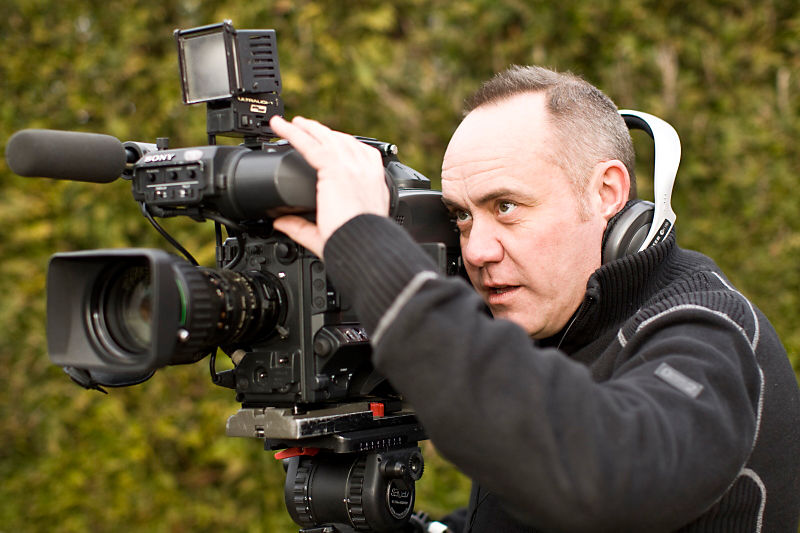FILMING YOUR EVENT
- Graham

- Apr 13, 2016
- 4 min read
Capturing your event on film seems like a good idea, and it is. Most importantly though, before you start, ask yourself WHY you want to film it. This is where many people go wrong; right at the outset.

Is it for archiving and future reference? Is it to create a buzz on social media? Is it to make more people aware of your company or brand? Is it to entice more people to attend your event in person? Is it to allow other people access to the event’s content and presentations?
Each one of these reasons to film your event will require a different planning process, different equipment and style of filming. Having a “why” at the outset will have countless benefits throughout the filming and editing. Let’s look at these five key reasons individually, hopefully it will save you a bit of wasted time and money when you decide to film your event.
1. Archiving
In reality you may as well buy yourself an entry to mid level digital handy cam or GoPro. They are normally really easy to set up, point and record, picking up the sound from their internal microphone and storing on a removable data storage card. If audio content is paramount make sure the camera has an audio input jack so you can take a feed from the PA system or an external microphone positioned near the action. If you’re working with an AV company on site ask if they can supply one for a base price rental.
2. Social Media
Your clip for social media needs to be 20-40 seconds long with short edits of the action telling a snappy story. You can upload a clip from your mobile phone of course but for maximum engagement; comments, “likes” and “shares” you need to think of it as a project.
The filming needs to be less about the content, more about the best looking short clips so lots of different footage gathered, no lingering arty shots or long pans or zooms. The more choice the editor has the better the end result will be to create a clip that encapsulates the mood and excitement of the event. Remember the video is going to be an almost “disposable” item so make sure your message or “call to action” is clear at the end.

3. Brand Awareness
All video clips of events are adverts of some sort and brand awareness is a critical project. Camera operator(s) need a comprehensive brief and shots need to allow for subtitles and any graphics to be used in the edit. Again a good storyline is important to engage a viewer; start with the end in mind, make sure your key values are represented in the shots and make sure the editor is aware of all these. It’s wise to employ a director, someone who can drive the project and feed you ideas while you ensure it stays focused and on track. Get the editor involved as early as possible in the project and employ high quality cameras and experienced operators.
4. Event Promotion
Use the success of an event to promote the next one – a popular and typical marketing technique. Your camera operators need to capture people enjoying and appreciating the event more than the event subject itself. Most people thinking about visiting your event next year are going to know what it’s about so they want to be sure that this is where they want to be! Utilise time-lapse and hand held cameras to give your editor some interesting footage to work with.

5. Event Access
Getting people to view the event online or delivering the content to them post-event can be a revenue generator. If you stream live to the internet you can place a video window in your website, branded and sponsored, even on a pay-per-view basis. This needs a different kind of pre-planning as you are effectively creating a live broadcast. Even editing for content download needs some thought so that the download experience reflects your quality and values.
For web streaming you need to display the detail of presentations as well as an overview for viewers to get a “feel ” for being there. Two cameras; one wide angle and one close up as well as direct feed of the media used for presentation should be employed. You’ll also need subtitles, holding slides and perhaps a logo for the corner of the screen, al included in the “pre-production” work.
For post event download you similarly need the presentation media and audio to ensure details are delivered clearly. A close up camera and/or wide shot is optional since most often the user is downloading to gain access to the information rather than the event; viewer fatigue will be less if some camera shots or picture-in-picture mix is included.
Don’t forget lighting – cameras work best when the subject is well lit.
For all streaming and download projects the subjects need to confirm that they own their media and material, be it performance or presentation, and you have permission to use it. This needs to be a written agreement whether they are charging you for the privilege or not. If it is for public consumption the audiences need to be aware they are being filmed for streaming or live broadcast so they have the choice to leave the room.





Comments